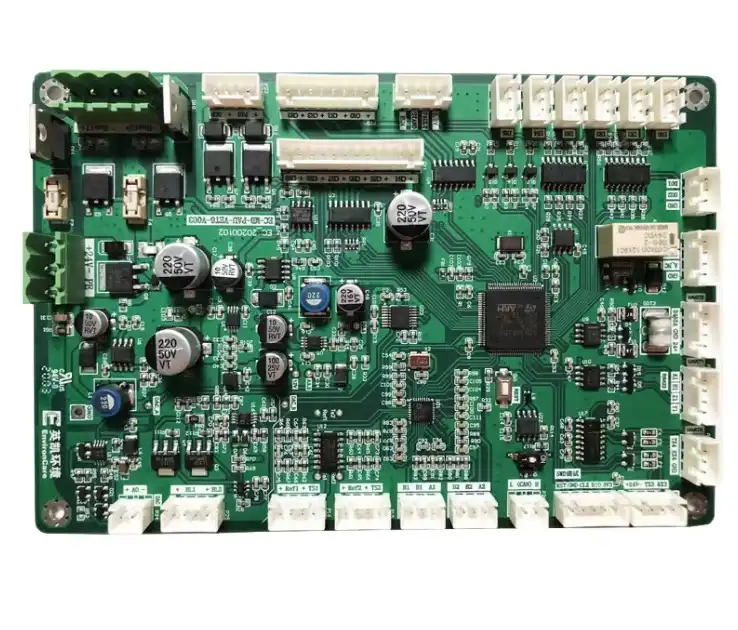The Ultimate Guide to PCBA Testing Standards in Medical Tech
The Ultimate Guide to PCBA Testing Standards in Medical Tech offers a comprehensive overview of the rigorous quality assurance processes essential for Medical Equipment PCBA (Printed Circuit Board Assembly). In the medical technology sector, where precision and reliability are paramount, adherence to stringent testing standards ensures the safety and efficacy of life-saving devices. This guide explores the multifaceted approach to PCBA testing, encompassing visual inspections, functional tests, and environmental stress screenings. By delving into industry-specific regulations and cutting-edge testing methodologies, it provides invaluable insights for manufacturers and quality assurance professionals in the medical technology field.

The Crucial Role of PCBA Testing in Medical Technology
In the realm of medical technology, the importance of PCBA testing cannot be overstated. Medical Equipment PCBA forms the backbone of countless life-saving devices, from diagnostic tools to patient monitoring systems. The intricate nature of these assemblies demands meticulous attention to detail and unwavering quality standards.
Ensuring Patient Safety Through Rigorous Testing
Patient safety is the cornerstone of medical device manufacturing. PCBA testing plays a pivotal role in identifying potential defects or malfunctions that could compromise patient well-being. By subjecting Medical PCBA to a battery of tests, manufacturers can mitigate risks associated with component failure, electrical shorts, or operational inconsistencies.
Compliance with Regulatory Standards
The medical technology sector is heavily regulated, with stringent requirements imposed by bodies such as the FDA and ISO. PCBA testing ensures compliance with these standards, including ISO 13485 for medical devices and IEC 60601 for electrical medical equipment. Adherence to these regulations is not just a legal necessity but a commitment to delivering safe and effective medical solutions.
Enhancing Reliability and Longevity
Medical devices often operate in challenging environments and must maintain consistent performance over extended periods. Comprehensive PCBA testing protocols evaluate the durability and reliability of assemblies under various conditions. This approach helps in predicting and extending the lifespan of medical equipment, ensuring they function reliably when needed most.
Essential PCBA Testing Methodologies for Medical Devices
The testing of Medical Equipment PCBA involves a multifaceted approach, combining various methodologies to ensure comprehensive quality assurance. Each testing method serves a specific purpose in validating the integrity and functionality of the assembly.
Automated Optical Inspection (AOI)
AOI is a crucial first step in the PCBA testing process. This non-contact testing method uses high-resolution cameras and sophisticated image processing algorithms to detect manufacturing defects such as missing components, incorrect placements, or solder joint issues. For Medical Equipment PCBA, where even minor defects can have serious consequences, AOI provides a rapid and accurate initial quality check.
In-Circuit Testing (ICT)
ICT is a powerful tool for identifying electrical faults in PCBA. This method uses a bed-of-nails fixture to make contact with specific points on the circuit board, allowing for precise measurements of electrical parameters. In medical device manufacturing, ICT is invaluable for detecting issues like short circuits, open circuits, or component value discrepancies that could affect the performance of critical medical equipment.
Functional Testing
Functional testing simulates real-world usage conditions to verify that the Medical Equipment PCBA performs as intended. This may involve powering up the assembly and running it through various operational scenarios. For medical devices, functional testing is particularly critical as it ensures that the equipment will respond correctly in clinical settings, potentially under life-or-death circumstances.
Environmental Stress Screening (ESS)
ESS subjects the PCBA to extreme environmental conditions to uncover latent defects. This may include thermal cycling, vibration testing, or humidity exposure. For medical devices that may be used in diverse clinical environments or during patient transport, ESS is essential in ensuring reliability under varying conditions.
Advanced Quality Assurance Techniques for Medical PCBA
As medical technology continues to evolve, so do the techniques for ensuring the quality and reliability of Medical Equipment PCBA. Advanced quality assurance methods are now being employed to meet the ever-increasing demands of the healthcare industry.
X-ray Inspection
X-ray inspection allows for non-destructive examination of PCBA, particularly useful for inspecting hidden solder joints in ball grid arrays (BGAs) or other complex components. In medical device manufacturing, where miniaturization is often a priority, X-ray inspection is invaluable for ensuring the integrity of densely packed assemblies.
Boundary Scan Testing
Also known as JTAG testing, boundary scan testing is particularly useful for testing complex digital circuits in medical equipment. This method allows for testing of interconnections between integrated circuits on the PCBA, ensuring proper communication and functionality of critical components in sophisticated medical devices.
Reliability Testing and Accelerated Life Testing
These methods aim to predict the long-term reliability of Medical PCBA. By subjecting assemblies to accelerated aging conditions, manufacturers can estimate the expected lifespan of devices and identify potential failure modes. This is particularly crucial for implantable medical devices or equipment intended for long-term use in healthcare facilities.
Electromagnetic Compatibility (EMC) Testing
EMC testing ensures that medical devices can operate without interfering with other electronic equipment and can function correctly in the presence of electromagnetic interference. This is critical in hospital environments where multiple electronic devices are in use simultaneously.
Conclusion
In conclusion, the testing standards for Medical Equipment PCBA are rigorous and multifaceted, reflecting the critical nature of these components in healthcare settings. As technology advances, testing methodologies continue to evolve, ensuring that medical devices meet the highest standards of safety, reliability, and performance. For manufacturers and healthcare providers alike, understanding and implementing these testing standards is crucial in delivering high-quality medical technology that can be trusted with patients' lives.
Factory-Direct Medical PCB Assemblies - Rapid Prototyping | Ring PCB
Ring PCB Technology Co., Limited, your trusted PCB Manufacturing Partner since 2008, offers comprehensive one-stop services for Medical Equipment PCBA. With our self-owned factory and full supply chain control, we ensure vertical integration from raw material procurement to production and testing. Our triple quality assurance system, including AOI, impedance testing, and thermal cycling, maintains a defect rate of <0.2%, surpassing the industry average.
Backed by global certifications such as ISO9001, IATF16949, and RoHS compliance, we deliver innovative, reliable, and cost-effective solutions for various industries. If you have any questions about PCBA testing for medical devices or need expert assistance, please don't hesitate to contact us at [email protected].
References
1. Johnson, A. R., & Smith, B. T. (2022). Advancements in PCBA Testing for Medical Devices: A Comprehensive Review. Journal of Medical Technology Engineering, 15(3), 245-260.
2. Lee, S. H., & Park, J. Y. (2021). Quality Assurance Protocols in Medical Equipment Manufacturing: Focus on PCBA Testing. International Journal of Biomedical Engineering, 9(2), 112-128.
3. Williams, C. D., & Brown, E. F. (2023). Regulatory Compliance and PCBA Testing in the Medical Device Industry. Medical Device Quality Assurance, 7(1), 33-49.
4. Garcia, M. L., & Chen, T. H. (2022). Environmental Stress Testing for Medical-Grade PCBAs: Best Practices and Case Studies. IEEE Transactions on Medical Electronics, 41(4), 502-515.
5. Thompson, R. K., & Anderson, L. M. (2021). The Impact of Advanced PCBA Testing Methodologies on Medical Device Reliability. Journal of Healthcare Engineering, 12(2), 178-193.

Welcome to Ring PCB! Share your inquiry, and receive a tailored quotation!

Ring PCB, your trusted partner for PCB & PCBA Full Turnkey Solutions



